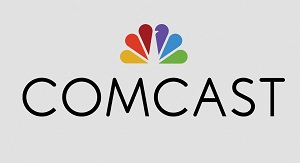Comcast Trials Aim To Unlock VOD Ad Dollars, Measure TV Binge Viewing

In work that could boost cable’s ability to monetize ad-supported TV series delivered on-demand and track binge viewing, Comcast, Nielsen and a growing number of broadcasters are testing out a new, measurable approach that enables advertisers to dynamically insert fresh spots into the most recently aired shows as well as into all prior episodes in a given TV season.
Cable has historically used Nielsen’s C3 ratings model, which measures VOD commercial viewing within three days of a show’s live airing, to give advertising credit to the most-recently offered episode in a TV series. Programmers, however, have not received C3 advertising credit for VOD views of any of the prior episodes of the series. This shortfall has generally limited the availability of TV series offered via VOD to a rolling batch of the latest four or five episodes rather than to an entire season's worth of episodes.
Using a mix of dynamic ad insertion (DAI) technology, the disabling of the fast-forward function within the commercials, and Nielsen-sanctioned measurement, Comcast hopes to change that dynamic with a concept called ODCR, or On Demand Commercial Ratings. As designed, ODCR inserts the full C3 ad load into not just the most recent TV episode, but into every prior episode of a season, and banks everything inside Comcast’s VOD platform.
Comcast hopes this approach will unlock VOD advertising dollars and expand the number of shows offered on-demand so customers can catch up on TV series, believing that this combo will also translate into stronger live TV ratings.
“The idea is pretty profound because it would then mean you’re not selling an episode; you’re selling a series,” Matt Strauss, Comcast’s senior vice president and general manager, video services, told Multichannel News in an interview.
ODCR, he added, could then provide a mechanism to monetize those older episodes that are being viewed in the C3 window but have not typically been given C3 credit.
Testing ODCR
Multichannel Newsletter
The smarter way to stay on top of the multichannel video marketplace. Sign up below.
Comcast’s work with Nielsen and the broadcasters in the ODCR arena is in the early stages.
For example, Comcast, Nielsen and NBCUniversal conducted a technical trial in Philadelphia and Boston over the summer that involved three TV series: E!’s Keeping Up With the Kardashians, and USA Network’s Burn Notice and Psych. Strauss said they kept the pilot small (just ten homes of Nielsen employees) so it would not affect the Nielsen ratings.

Comcast said the trials showed that it could not only insert the C3 ad load into new and prior episodes of the series, but, perhaps more importantly, that Nielsen could measure it.
“We just wanted to see if we could get it working,” Strauss said. “Based on this technical trial, we could show that it worked.”
And the next steps are already underway. Comcast, Nielsen and ABC are now conducting ODCR tests. CBS, which just inked an expanded VOD deal with Comcast, is thinking about giving ODCR a test run.
“We’re definitely interested” in doing an ODCR trial, David Poltrack, chief research officer of CBS, told Multichannel News. “With the DVR, you put the control in the hands of the consumer, but with VOD you give them the same benefit but you’re controlling it…VOD should have always been an ad-supported alternative.”
Tracking ODCR’s Deployment Path
If those tests continue to produce good results, 2014 could be a big year for ODCR.
“We look to next year as an opportunity where we could technically deploy ODCR,” Strauss said, offering this bold prediction: “It really is going to stimulate discussion within the industry between the programmers and the advertisers around how advertising is bought and sold.”
Comcast, Nielsen and broadcasters are pushing ahead with these trials as TV VOD becomes increasingly popular.
Strauss said about 40% of all monthly set-top VOD usage for Comcast involves consumers binging on TV series, estimating that about half of Comcast’s subscribers use VOD to catch up. In April, Rentrak reported that the time subscribers spent viewing free VOD fare surged 40% in 2012 versus 2011's levels. Last year, Rentrak estimated that free VOD represented an advertising opportunity of at least $1 billion, though much of it has been left on the table.
“There’s no doubt that within the last 18 to 24 months we’ve seen tremendous growth in TV viewing on demand,” Strauss said.
Strauss said the operator will now strive to engage with others in the VOD ecosystem as ODCR becomes an increasingly viable option.
“As we iterate on this, it’s going to transition into how the programmers want to use it and whether the advertising community will embrace it,” he said. “From our point of view, we’re not advocating the ad models that should be used for on-demand. We’re trying to put forward the technology and the measurement to give the programmers as much choice as possible so they can make the right decision on how they want to monetize it.”
With dynamic ad insertion now a technical possibility, “there’s no reason why they [the advertisers] wouldn’t embrace this opportunity,” CBS’s Poltrack predicted. However, “getting enough critical mass for VOD to become a new form of television advertising expression, that’s going to take some time,” he added. “The next step is to get the buy-in from the advertisers in terms of using this to further extend their national advertising campaigns.”
“We are in a position where we could deploy this technology but it really comes down to whether or not the programming community sees value in ODCR,” Strauss added.
Using VOD To Drive Live TV Ratings
An underlying aim of ODCR is to take advantage of the symbiotic relationship between live TV and VOD, as evidence continues to show that providing consumers with the ability to catch up or binge on a TV series using VOD can not only expand the audience for a show but also goose viewership ratings for future live linear broadcasts.
“A lot of times shows don’t pick up steam until the third or fourth episode,” Strauss said. “By moving to full season, you now have the ability for customers to catch up.”
By way of example, Comcast has been using VOD to promote NBC’s The Blacklist in the C3 window, and found that the ratings of the show are almost 100% higher in Comcast homes than in non-Comcast homes.
“The only way to really attribute that, we believe, is because of on-demand,” Strauss said. “We’re seeing this trend with The Blacklist and almost all of the shows we’re promoting [with VOD].”
At this stage, the Comcast’s ODCR trial work is limited to the set-top box and not yet ready to be extended to mobile devices and TV Everywhere applications. The measurement for TV Everywhere isn’t fully in place yet to capture C3, but “technically, we can build the capabilities to support all platforms,” Strauss said.
